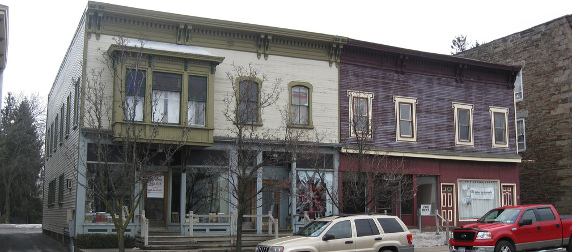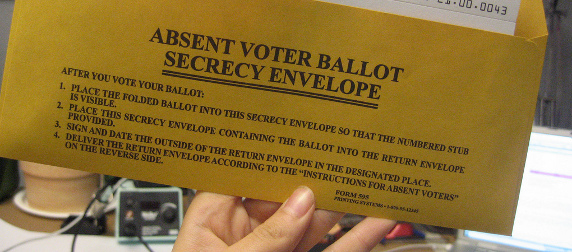Our clients are a diverse bunch, with a long list of far-ranging challenges and problems between them. But I suspect few outsiders would guess that list would include “rustlers.”
None of our clients need to call John Wayne. They aren’t losing cattle; they’re losing trees. Whether you call them rustlers or just thieves, though, the problem is real, and it is not trifling.
Palisades Hudson’s clients are spread across about 35 states, and many of them are interested in forestry and farming. I have heard the same thing from many of them, in many places: Timber rustling is on the rise. By timber rustling, I mean thieves who go to isolated woodland parcels, often late at night (presumably after scouting their targets in daylight), to cut and make off with the most valuable trees.
In upstate New York and other parts of the Northeast, the typical targets for such rustlers are black cherry, red oak and sugar maple. Landowners can easily lose $20,000 of timber in a single night.
New York has tough penalties for timber theft, but enforcement and prosecution is spotty. The state’s Department of Environmental Conservation warns that “Prosecuting timber thieves is expensive and convictions are often very difficult to obtain,” even under New York’s relatively robust laws. Other places are much more lax. (For timber owners who find themselves the victims of scams in which loggers either claim they thought wood was part of a neighbor’s property or take much more timber than the owner agreed to sell, legal recourse may be even harder, since accepting any money changes the nature of the crime and generally renders it a civil, rather than criminal, matter.) To complicate matters, the nature of the crime means that, frequently, the theft will not be discovered for weeks - sometimes even longer - making it hard to track the stolen lumber.
A relatively high-profile case in Genesee County, N.Y., two years ago demonstrates the difficulty of proper restitution, even when the culprits are apprehended. Six landowners in the county, which lies between Buffalo and Rochester, collectively received $72,361 in restitution for stolen timber. Some claimed to have been defrauded, others that their timber had simply been stolen outright. While restitution for the trees’ value is better than nothing, the aesthetic damage to property and the setbacks to future years’ yields are not so easily restored. And initial reports indicated that the damage extended far beyond those six landowners, too.
Timber rustling is not a problem restricted to New York, nor is it new. Oregon timberland owners suffered a spate of such thefts, especially of old-growth cedar, that spiked in the late 1970s; the problem was severe enough to attract the attention of the FBI. The housing boom in the 1990s fueled timber thefts in the Southeast, especially eastern Texas and western Louisiana. The thieves hoped to cash in on increased demand for building materials. The problem persists in the region, as a recent conviction in Mississippi demonstrates. The state reported that timber rustlers were responsible for over $3 million in losses over the past five years in Mississippi alone. The New York Times reported that Arkansas investigators recovered more than $1.4 million from timber theft cases between 2002 and 2008.
Though the problem is not new, some solutions may be, based in new technologies. Modern solar power and cellphones may offer new defenses to timber owners. It should now be possible, though not easy, for owners to monitor travel on forest trails, and to photograph people and vehicles who cross their land. (The practice should produce some interesting wildlife shots, too.) Even absentee owners may be able to take a direct hand in monitoring their land with the right surveillance equipment, though many of them may still find it wise to hire a human overseer close at hand or to cultivate a strong relationship with the owners of neighboring properties. RFID chips may also make it possible to trace stolen wood before it can be processed.
Penalties for trafficking in stolen wood ought to be increased, too. Sawmills that purchase raw logs should have some responsibility for knowing the source and provenance of their raw timber. So should furniture makers, including the small artisans in wooded parts of the country who use expensive logs to turn out high-value and often finely made products. It wouldn’t be too hard, and it would make it more challenging for timber rustlers to profit from their ill-gotten materials.
Timber theft is just as much a problem on state and federal forest lands. In that case, since we all own the trees, we all are victims. The Forest Service has long taken such thieves very seriously, but damage to national treasures such as California’s Redwood National Parks cannot be undone.
In the meantime, when you drive past wooded hills in whatever part of the country you happen to pass through, think of the responsibility that landowners undertake to create forests that are healthy, productive and valuable. Stealing a tree in the dead of the night is not a victimless crime.















March 20, 2014 - 8:56 am
Great article. My company and spends a great deal of time with our clients working on theft and fraud prevention programs. In most cases it is cheaper to prevent fraud than prosecute fraud. Thanks.